Raleigh Stride 3 review: A big beast that became a big part of family life
Designed for inner-city life, this heavyweight trike can take the place of a car for 95% of short trips. And your kids will love you for it.
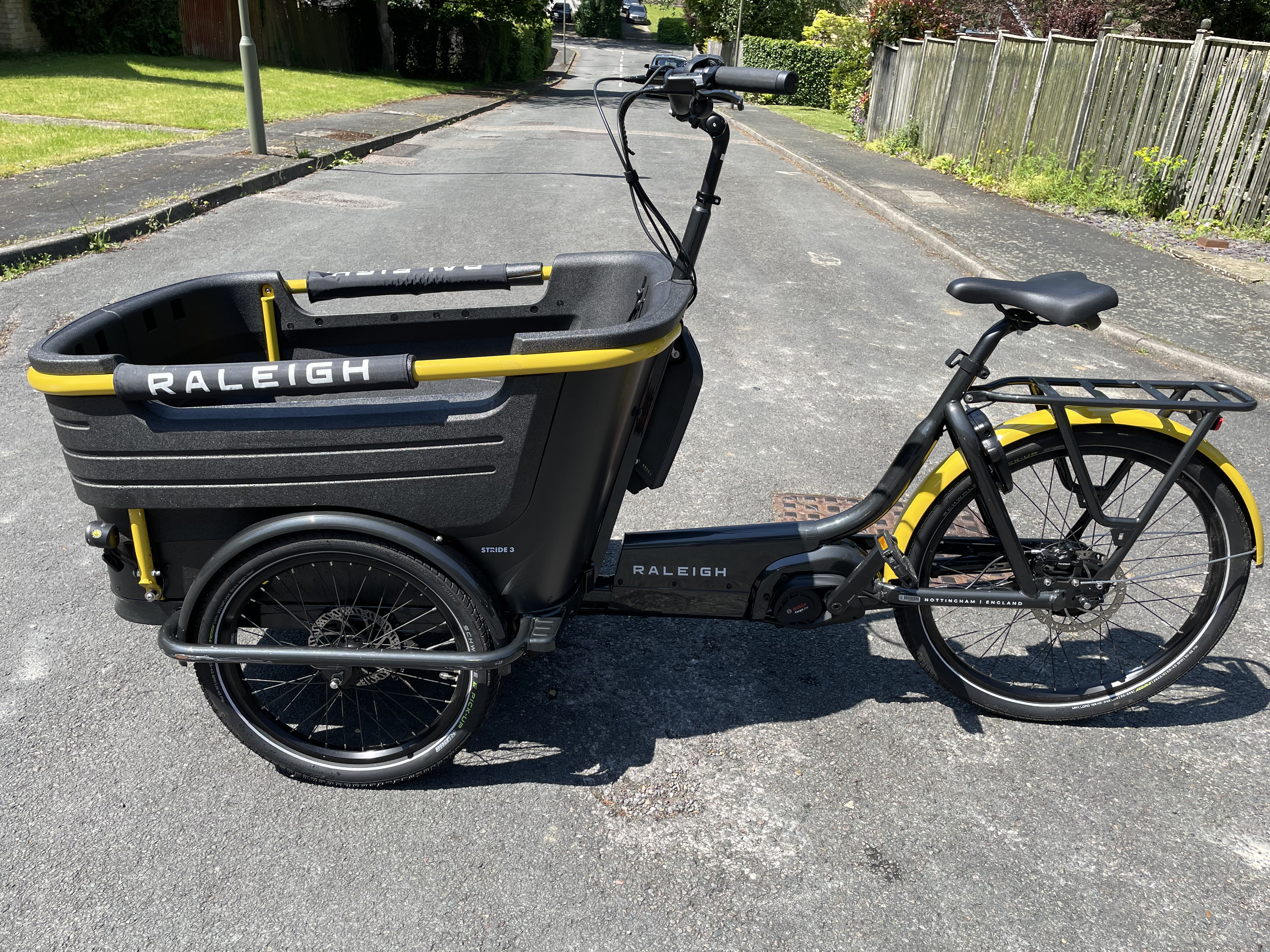
Heavy, with cumbersome steering, and not exactly great on broken or uneven road surfaces, our family still fell instantly in love with the capacious Raleigh Stride 3 as it quickly became the preferred mode of transport for short trips, no matter the weather.
-
+
Your kids will love it
-
+
Means you can leave the car at home
-
+
Carries a big load
-
+
Great on hill starts
-
-
Harsh for passengers over poor surfaces
-
-
Can’t nip past traffic
-
-
Steering on descents is challenging
-
-
Non-tilting front wheels
You can trust Cycling Weekly.

Swinging my leg over a three-wheeled, 110kg bike isn’t the usual way I start a ride. But then this isn’t my usual kind of bike. Heavy tyres, a big metal frame holding a polystyrene-formed bucket, a roof with windows, a wide fat saddle, big flat bars and, thankfully, a whopping great battery down by my feet, this e-cargo bike is like nothing I’ve reviewed in more than 20 years of cycling journalism.
But the Raleigh Stride 3 (£4,499) isn’t just unlike the svelte carbon race bikes I usually test, it’s unlike any kind of bike I’ve ever ridden. But perhaps that’s because a) it’s a trike, and b) it’s not meant to be like a bike, it’s meant to be more like a car. These machines are designed for carrying little loads over short distances.
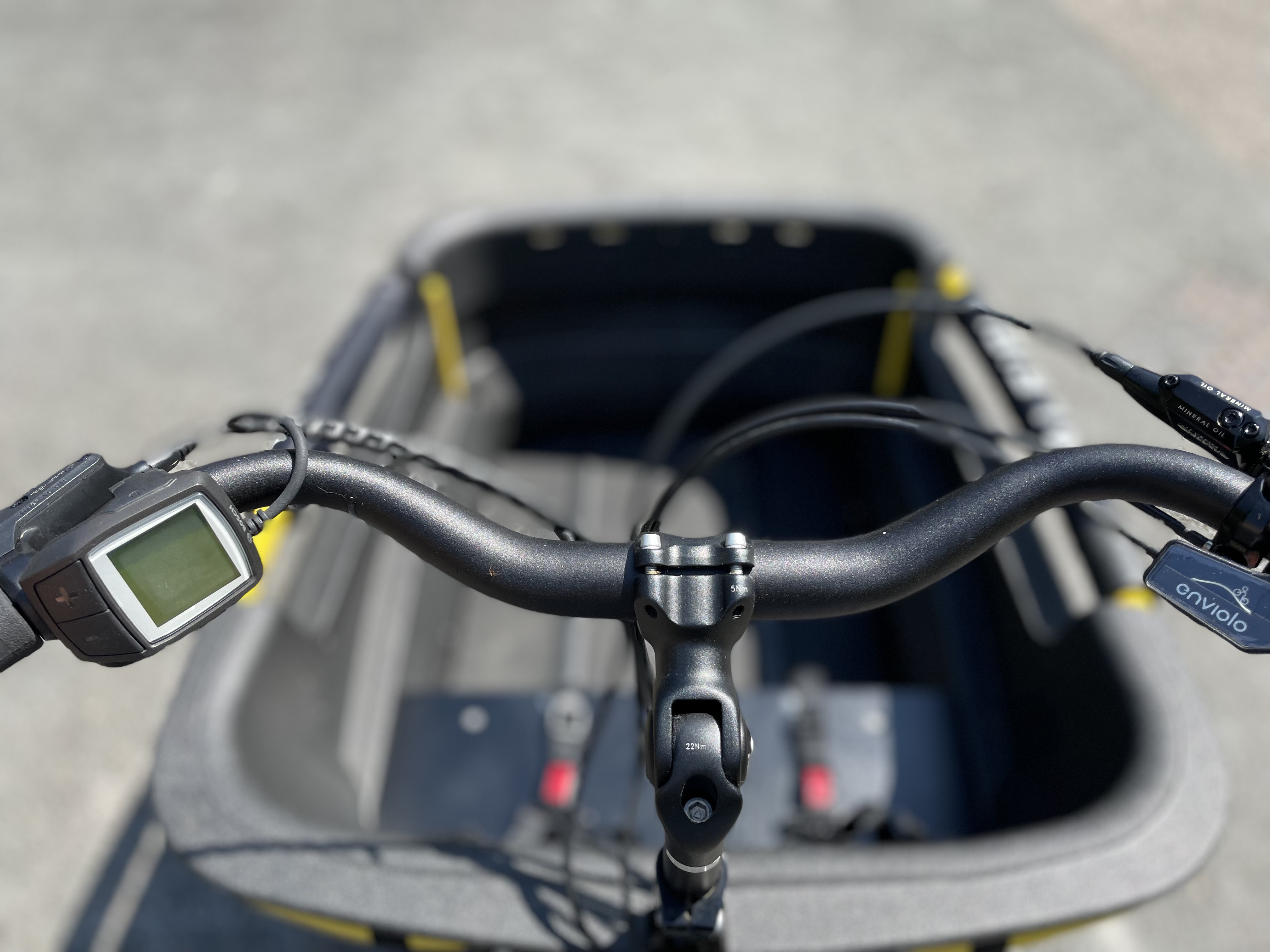
There's plenty of room upfront in the Raleigh Stride 3
I had two little loads to transport in mine, a four and a seven-year-old, who both fitted nicely onto the wooden bench and enjoyed the many admiring glances, excited waves and comments they got on their travels around our town.
Not only does the Raleigh Stride 3 comfortably carry two young children, there’s room for several shopping bags as well. Stick a couple of pannier bags on the rear rack and you could haul even more. With a couple of strong bungee cords, you could probably take the kitchen sink.
Travelling to school this way was no punishment. Despite the hard wooden seat and incredibly bumpy roads, my kids would take this option over the car any day. And I do mean any day. I was once begged to take them to school in monsoon-like conditions. While I was utterly soaked, through my waterproof jacket and trousers, they were happy and dry inside the sheltered front section, laughing their heads off at the water pouring off of me.
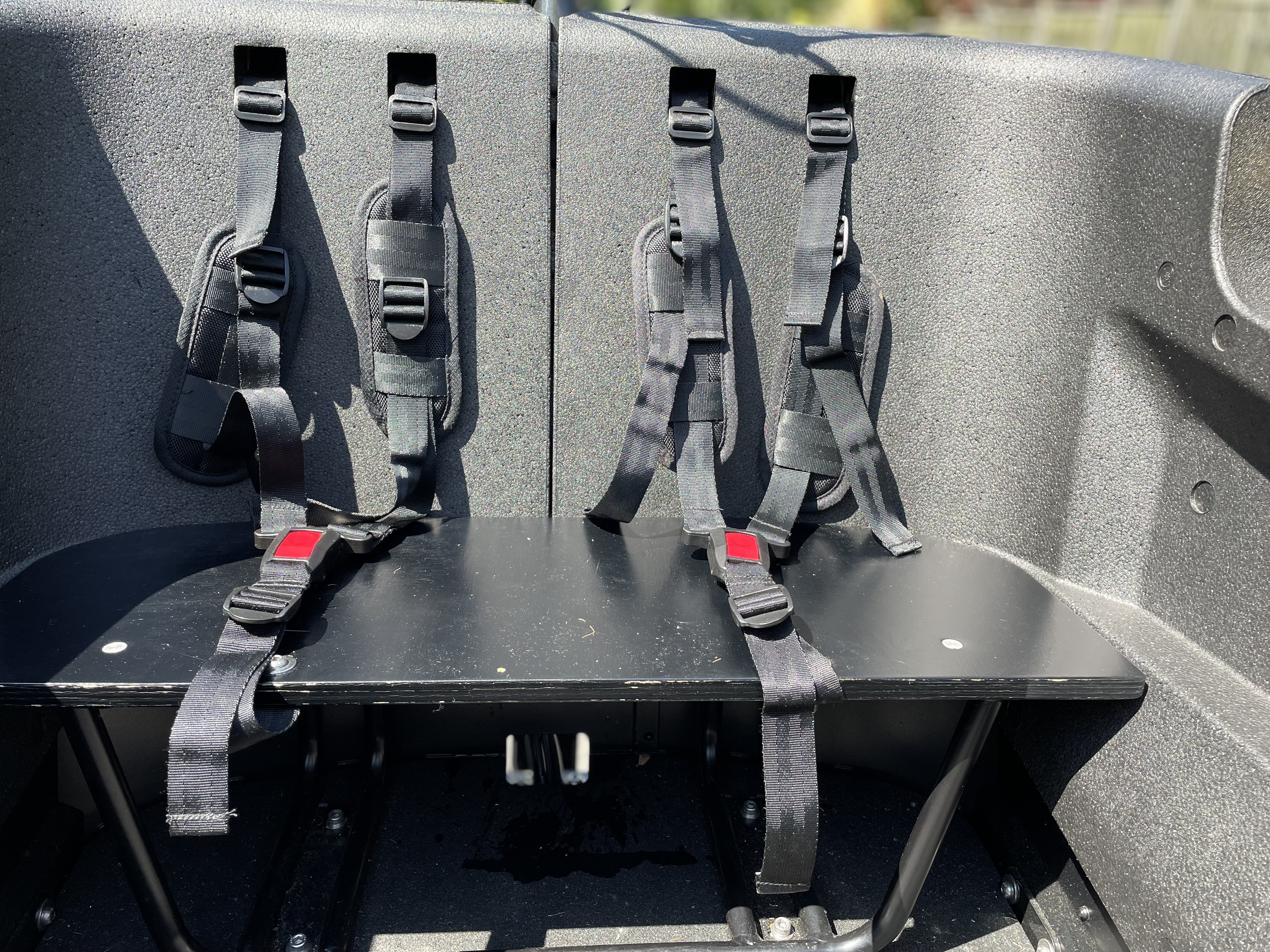
Seatbelts provide security, but that bench needs some padding!
Raleigh Stride 3: The build
Do a quick web search and you’ll see the majority of e-cargo bikes come with two wheels, including the Raleigh Stride 2. Having three gives much more stability, which means there’s no need to take the weight of the bike on one leg when balancing at a standstill - which gets harder the heavier it is. This is a boon for hill starts and waiting at traffic lights, but it does affect the steering, which we’ll come to later.
The two 20-inch front wheels sit on either side of the rectangular frame that holds the 109cm(l) by 76cm(w) by 51cm(d) polystyrene bucket. In here is a small wooden bench and two seatbelts. Although adjustable, they wouldn’t reach over the shoulders of a seven-year-old, and were a bit tight on a four-year-old, so we fastened them around their waists. The Raleigh website shows this bike with two padded seats attached to the bench, and another bench at the front, with two more seatbelts, so be sure to check for the available options.
The bike’s main frame attaches underneath the bucket via an angled pivot that allows the main bar - which runs back to the rear triangle and up to the saddle - to slant gently from side to side when steering. The steering column is bolted to the back of the bucket frame with vertical adjustability and some for-and-aft rotation in the stem.
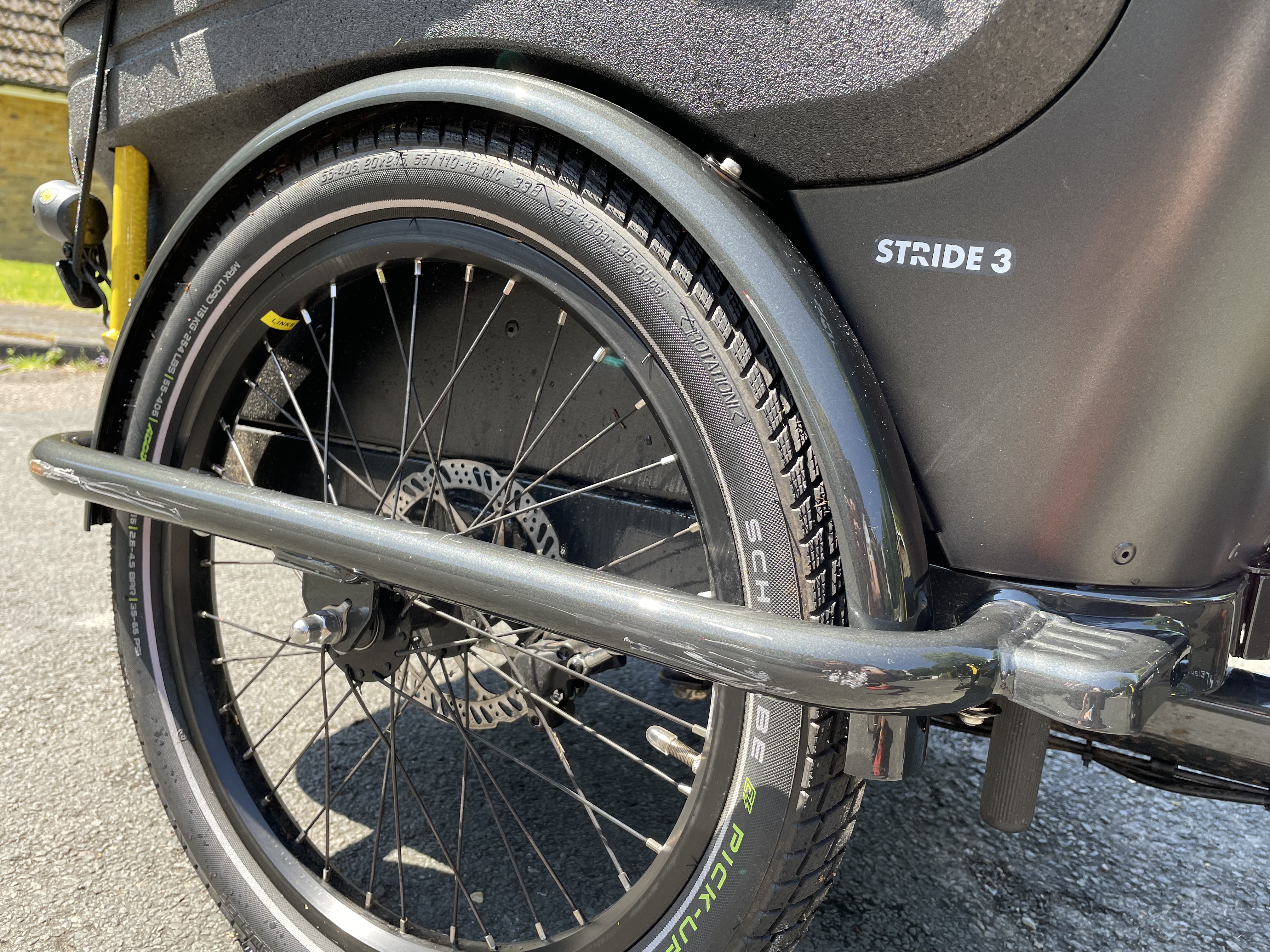
A big heavy frame makes this trike almost indestructible
The pedal-assist Bosch Performance CX Cargo line motor sits as per usual in the bottom bracket area with the 500Wh battery pack locked in place on the back of the cargo bucket. Power is controlled by the buttons on the head unit that's mounted inboard of the left handgrip, while on the right is the gripshift for the ingenious Enviolo internal hub gear.
That hub is built into the 26-inch rear wheel that’s surrounded by a pannier rack, which is bolted to the main frame. Interestingly, the bars of the rack were too wide for an old Thule pannier bag with twist clamp fixing. This fixing type now looks to be obsolete and most bags should fit, especially those with fabric fastening straps.
The bike has two front and one rear light that run off the main battery, turned on and off by holding the + button on the head unit. Disc brakes are courtesy of Tektro with two 160mm rotors at the front and one 180mm rotor at the back providing plenty of stopping power. There’s also a handbrake on the right lever to stop the bike from rolling away.
The cover is a heavy material with PVC windows front and side, held in place by a metal frame. It’s open at the back but otherwise completely waterproof. It’s held in place with two elastic straps at the front that fix over the lights, and two more at the back.
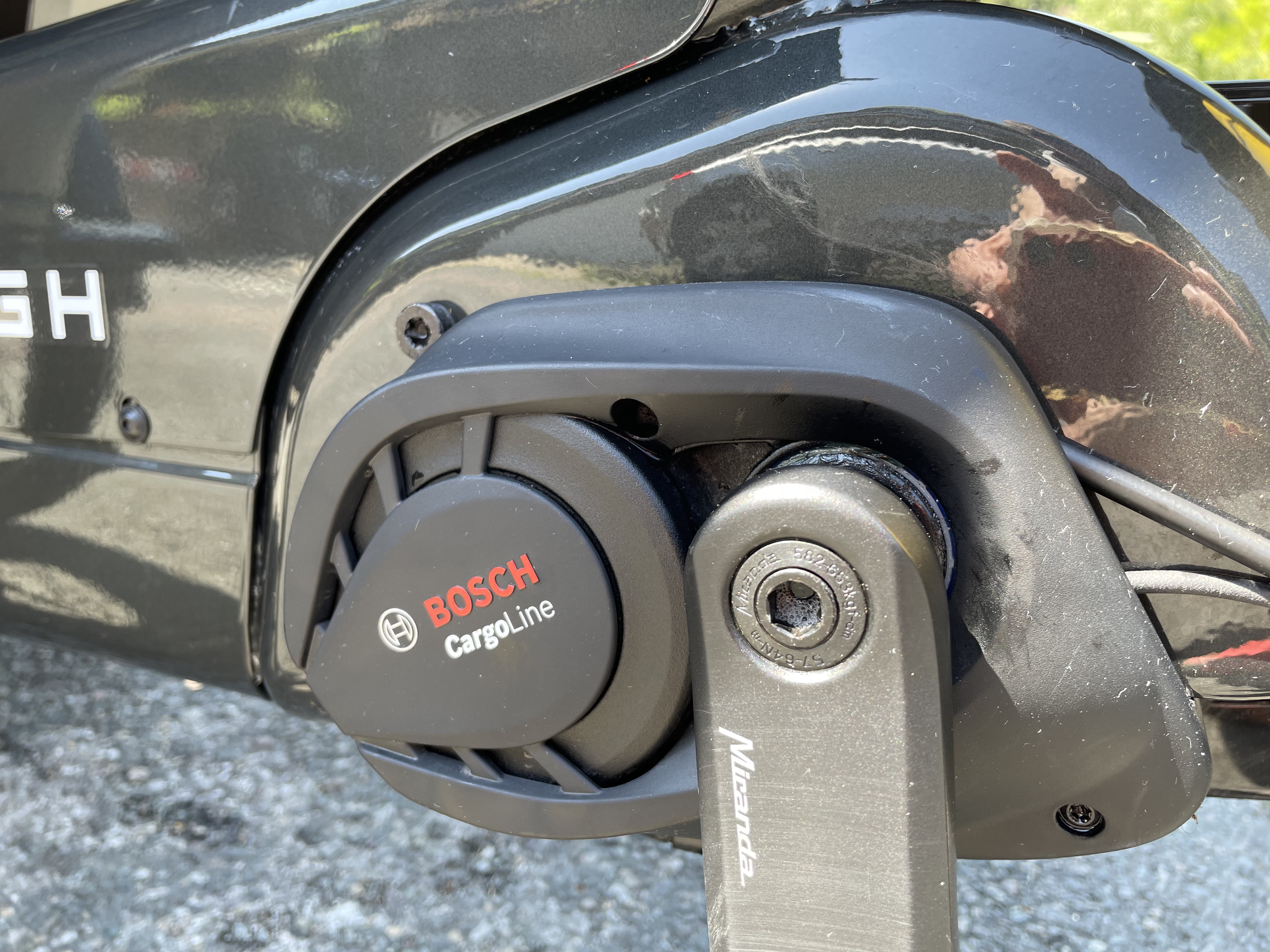
Bosch's cargo line motor delivers power exactly when it's needed
Raleigh Stride 3: Battery, electronics and gearing
The pedal assist Bosch Performance CX Cargo line motor sits in the bottom bracket, as with all their motors. This is powered by the 500Wh power pack that is locked in place on the back of the cargo bucket. It can be charged in situ, or unlocked and taken off for charging. The key that unlocks the battery is the same for the frame lock on the rear wheel.
The battery and motor can deliver power in four different modes. Eco, Tour, Sport or Turbo. Bosch’s manual lists assistance factors of 60, 140, 240, and 400% for those modes respectively. All levels assist up to 25kph before cutting out as per the regulations. I never used the Eco level - it was almost imperceptible - and rarely used Tour.
Instead, I spent most of my riding time in Sport or Turbo. Turbo level was always engaged whenever going up a gradient, even a slight one, with or without passengers. The bike is simply too heavy to ride without. To test this I tried to ride up a 5% gradient with no assistance and promptly came to a standstill. As I said, this is one heavy bike.
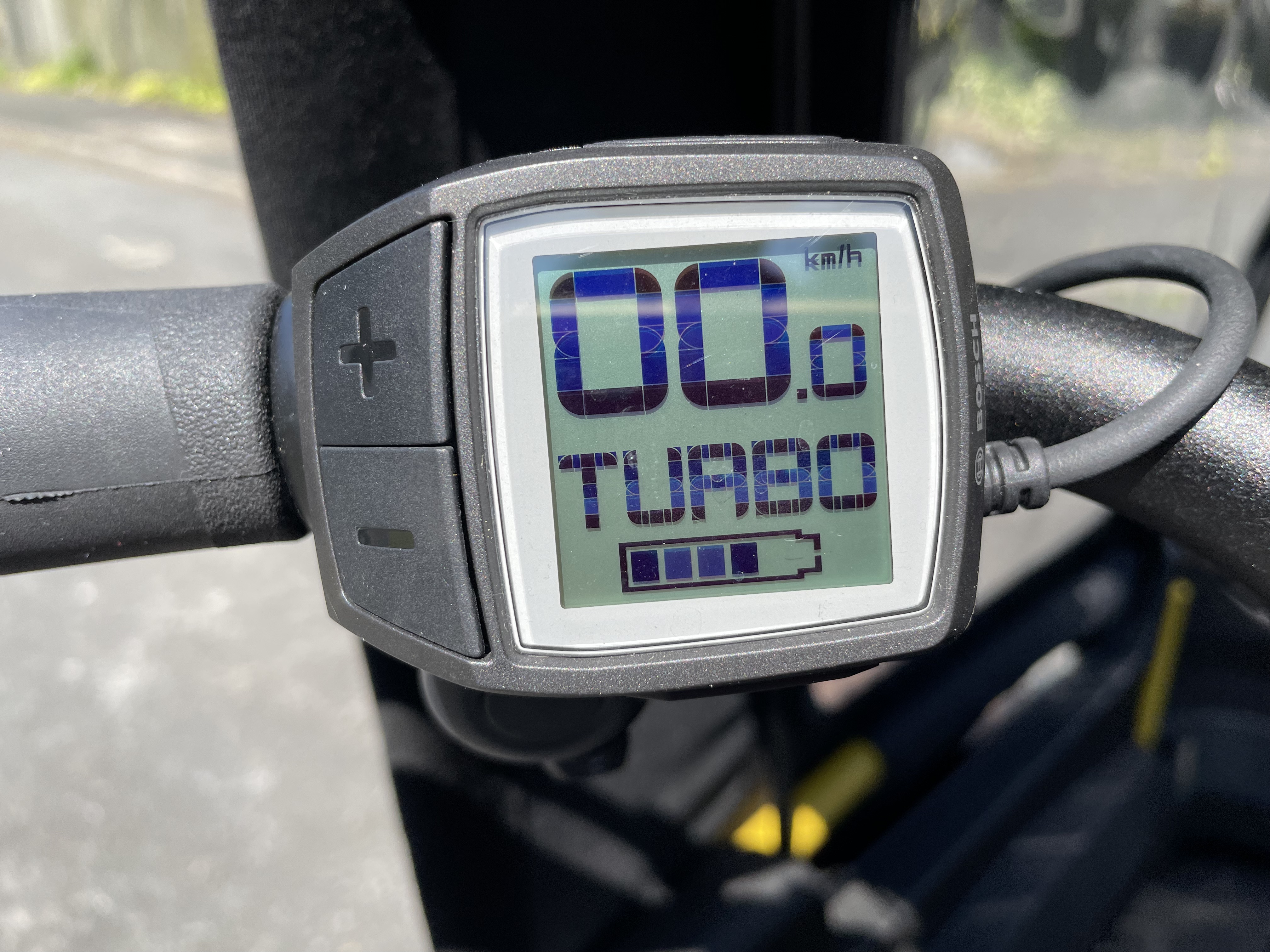
Stick it in Turbo mode as soon as you see a hill approaching
Flicking between the modes is done via the + and - buttons on the head unit and changes can be made while pedalling, which immediately updates power delivery. The rate of power delivery works seamlessly with the ingenious stepless Enviolo hub system that is controlled with the gripshift. A stepless gearing system means resistance is on a sliding scale that you can stop at any point, with no clicks or fixed points to stop on.
The system works by rotating metal balls altering the friction on an input and output ring on either side of them. It’s maintenance-free and works brilliantly. Enviolo claims shifting under load is a breeze, which isn’t quite true. I found I needed to back off the pedals for a split second to allow it to change, especially when going uphill.
The gear you’re in and the pressure you put on the pedals feeds back to the Bosch motor, which will deliver more power earlier in the pedal stroke when you’re in the smallest gear, helping you get up the hills. As you change into bigger gears, power delivery backs off at lower speeds.
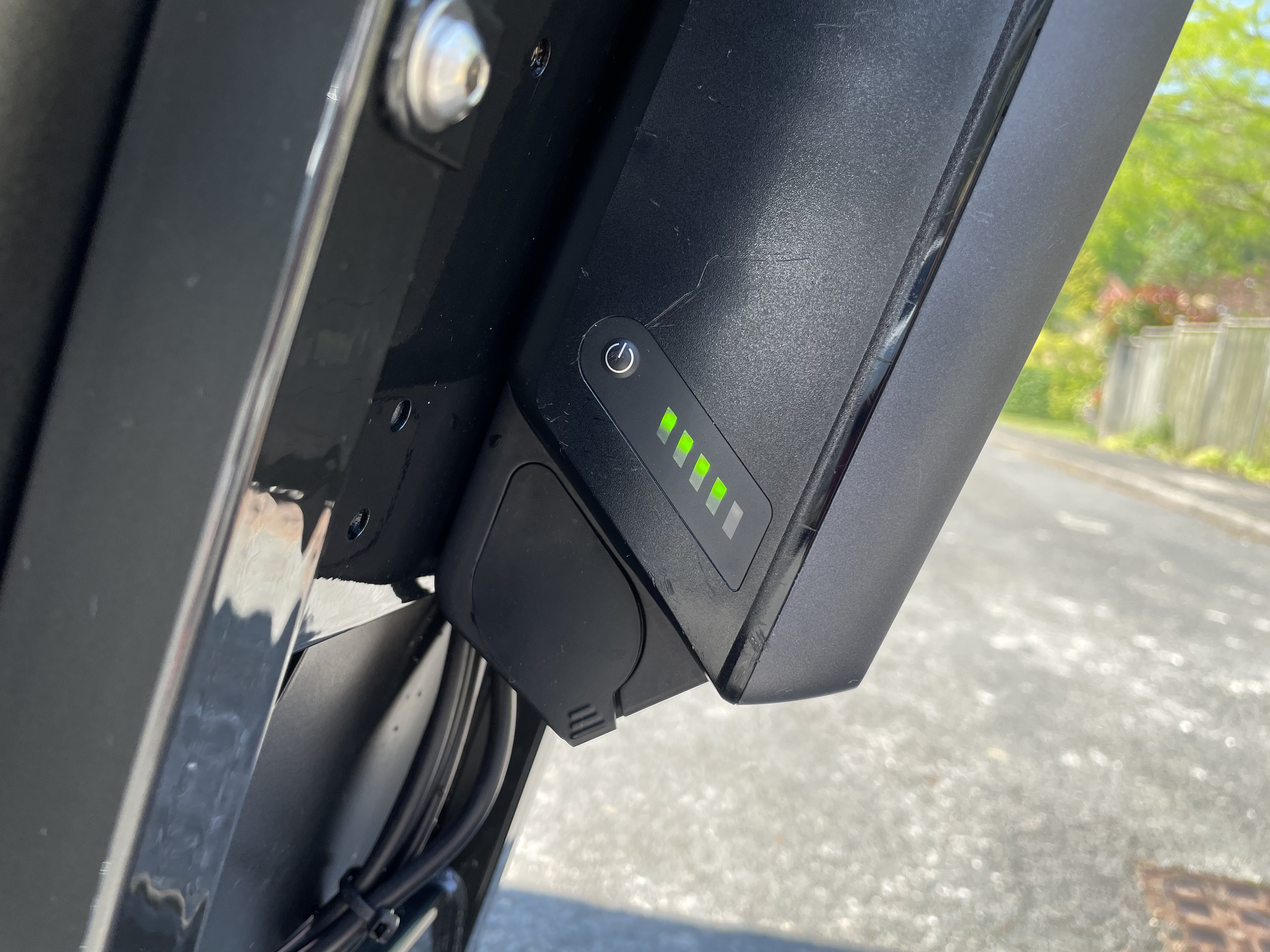
Initial pick-up in the power delivery is spot on too, waiting for you to press firmly on the pedals before it smoothly delivers power. This means there’s no sudden lunge forwards, which could be dangerous on a bike this heavy. On a really steep hill, moving from a standing start did take a fair bit of effort to get the motor to kick in, but we’re talking about a 20% gradient, and I suspect very few people would be using it on roads this steep.
As ever, battery range - that can be displayed on the head unit - is dependent on usage. Ride over hills in Turbo mode, with heavy loads and the range is as short as nine kilometres, but take it a little easier, in Sport or Tour mode on flat roads and it will stretch out to 25-30km. After a full charge, Eco mode will show a range of 70km, but Eco mode is unrealistic on a bike this heavy. The range is something you’ll get to know the more you use it and it can also be affected by temperature and battery age. But whatever you do, do not run out of battery as you’ll end up pushing it home.
One nice little feature is the Walk mode. Hit the switch on the bottom of the head unit to engage this mode, then hold down the + button and the bike will move forward at a very slow walking pace. As soon as you take your finger off the button the power cuts out and it switches out of Walk mode, so there’s no accidental forward movement should your finger slip off and back on. This was very helpful when parking.
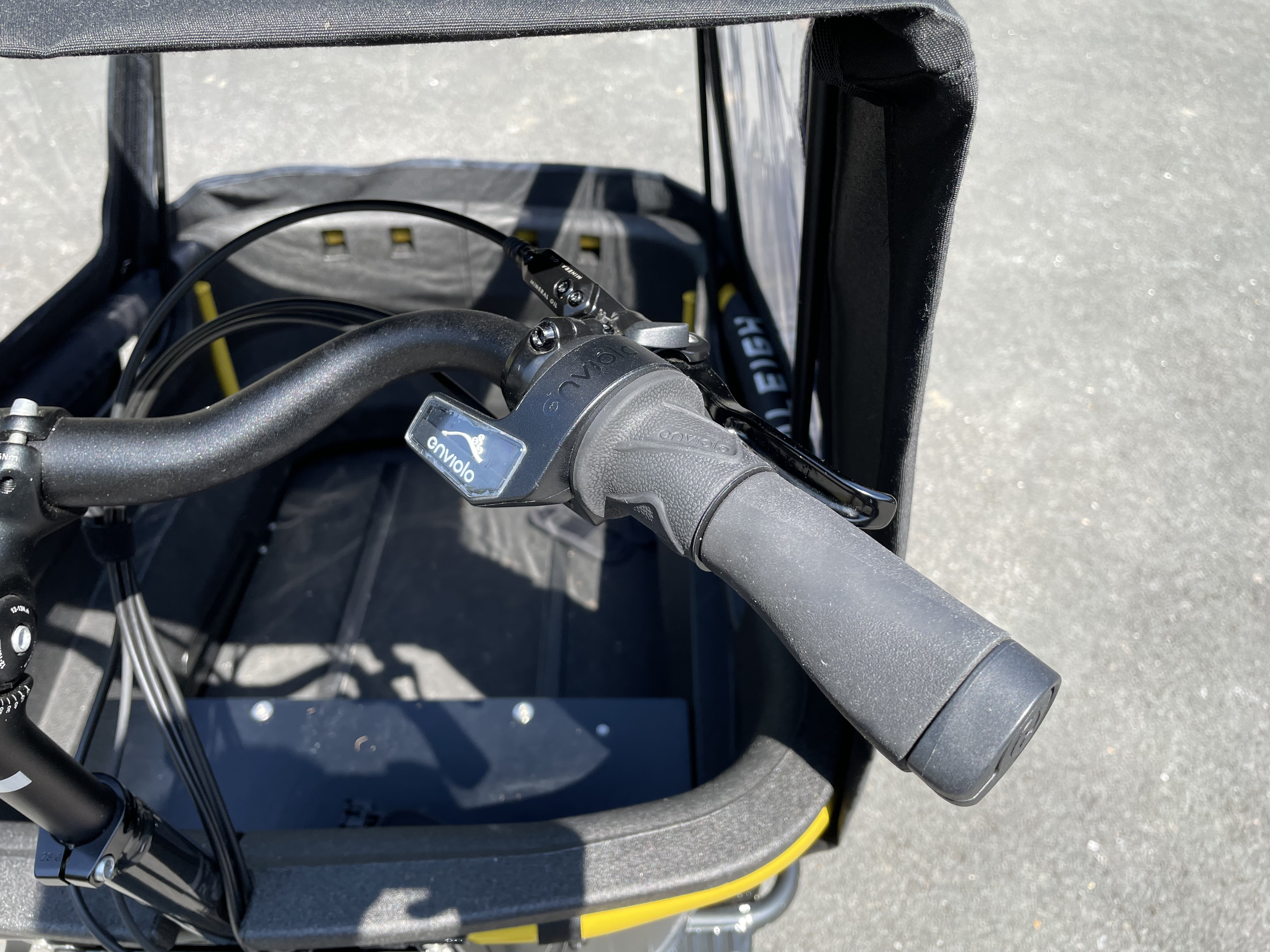
Stepless gripshift gear changes are idea for this use
Raleigh Stride 3: The ride
The riding position of the Stride 3 resembled the sitting position on my office chair more than my race bike. And no, I didn’t wear lycra to ride it. The position gives good visibility, allowing you good vision of the road over the top of the bike’s roof. The first thing I noticed when on my first ride was the steering. This bike does not lean, it steers. The front wheels are fixed to the frame and have no tilt in them, meaning corners need to be taken very slowly. Compared the the BMC Teammachine I’m currently testing, it’s like turning an oil tanker.
A right angle turn ridden at any more than 15kph deweights the inside front wheel, unnervingly so. And adding weight to the bucket doesn’t minimise this. I never got anywhere near the tipping point, I wouldn’t dare, and although the low centre of gravity helps keep it grounded, I had to completely change my perception of what is and isn’t fast.
I also found the bike became unstable at speed. I know, I know, this bike is not built for speed, but if you live in or around hills it’s not difficult to reach 40kph on descents just by letting it roll.
On a smooth, straight stretch of road (note to the HR department and my wife: all my speed testing was done without passengers) I reached 44kph and had no issue, but speeds in the mid to high 30s on a rough road or one that needs steering resulted in some very scary moments when I almost lost control of the front end.
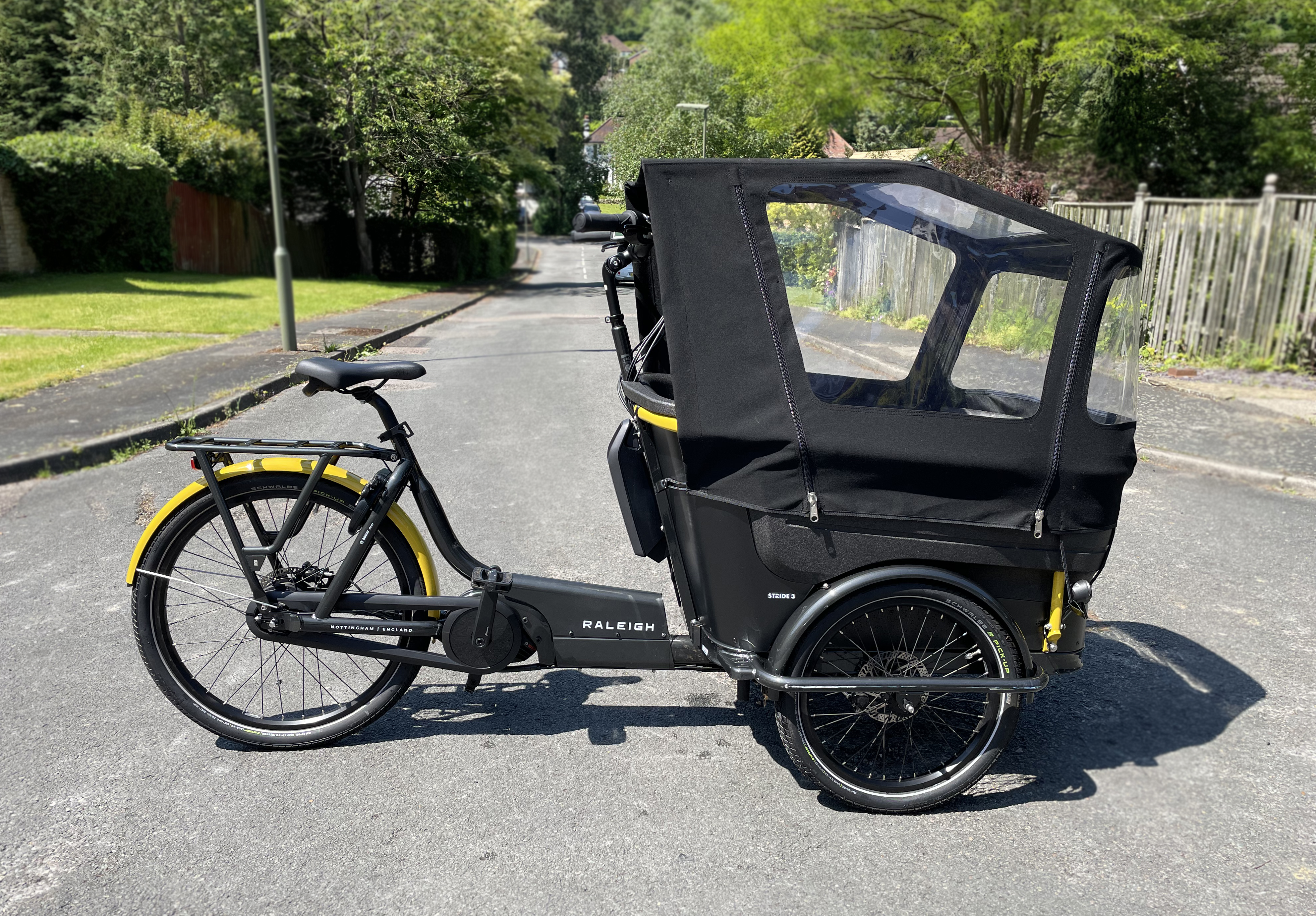
Ready to ride, whatever the weather
The one thing I would like to see added to this bike is a tilting mechanism on the front cage, or at least some suspension. Either of these would improve the handling. Suspension would also improve the ride for the passengers. We hit some bumps that actually lifted them off the seat. While this initially produced great howls of laughter, we did have to create a makeshift padded seat to protect them, as it eventually started to hurt them a little. We also got to know where every bump is on the routes to school we took. I then started giving them a countdown to the bump so they could ready themselves.
The difficulty of riding a trike is that there is almost no way to avoid a pothole, other than taking early action to give it a wide berth. Run the front wheels on either side of it and the rear wheel catches it, while trying to steer around it quickly is too destabilizing. Suspension on the front wheels would improve this as well as the handling.
The roads and routes I tested the Stride 3 on are, I’m willing to bet, the opposite of what it was designed for. And while it didn’t pass every test with flying colours, the joy of travelling this way was indisputable. At nearly £5,000 this is not exactly a cheap transport option, but it’s cheaper than a car, doesn’t require VED, tax or insurance and comes with the additional benefit of adding some exercise to your daily routine.
And did I mention? The kids absolutely loved it.

Thank you for reading 20 articles this month* Join now for unlimited access
Enjoy your first month for just £1 / $1 / €1
*Read 5 free articles per month without a subscription

Join now for unlimited access
Try first month for just £1 / $1 / €1
Get The Leadout Newsletter
The latest race content, interviews, features, reviews and expert buying guides, direct to your inbox!

Editor of Cycling Weekly magazine, Simon has been working at the title since 2001. He fell in love with cycling 1989 when watching the Tour de France on Channel 4, started racing in 1995 and in 2000 he spent one season racing in Belgium. During his time at CW (and Cycle Sport magazine) he has written product reviews, fitness features, pro interviews, race coverage and news. He has covered the Tour de France more times than he can remember along with two Olympic Games and many other international and UK domestic races. He became the 130-year-old magazine's 13th editor in 2015.
-
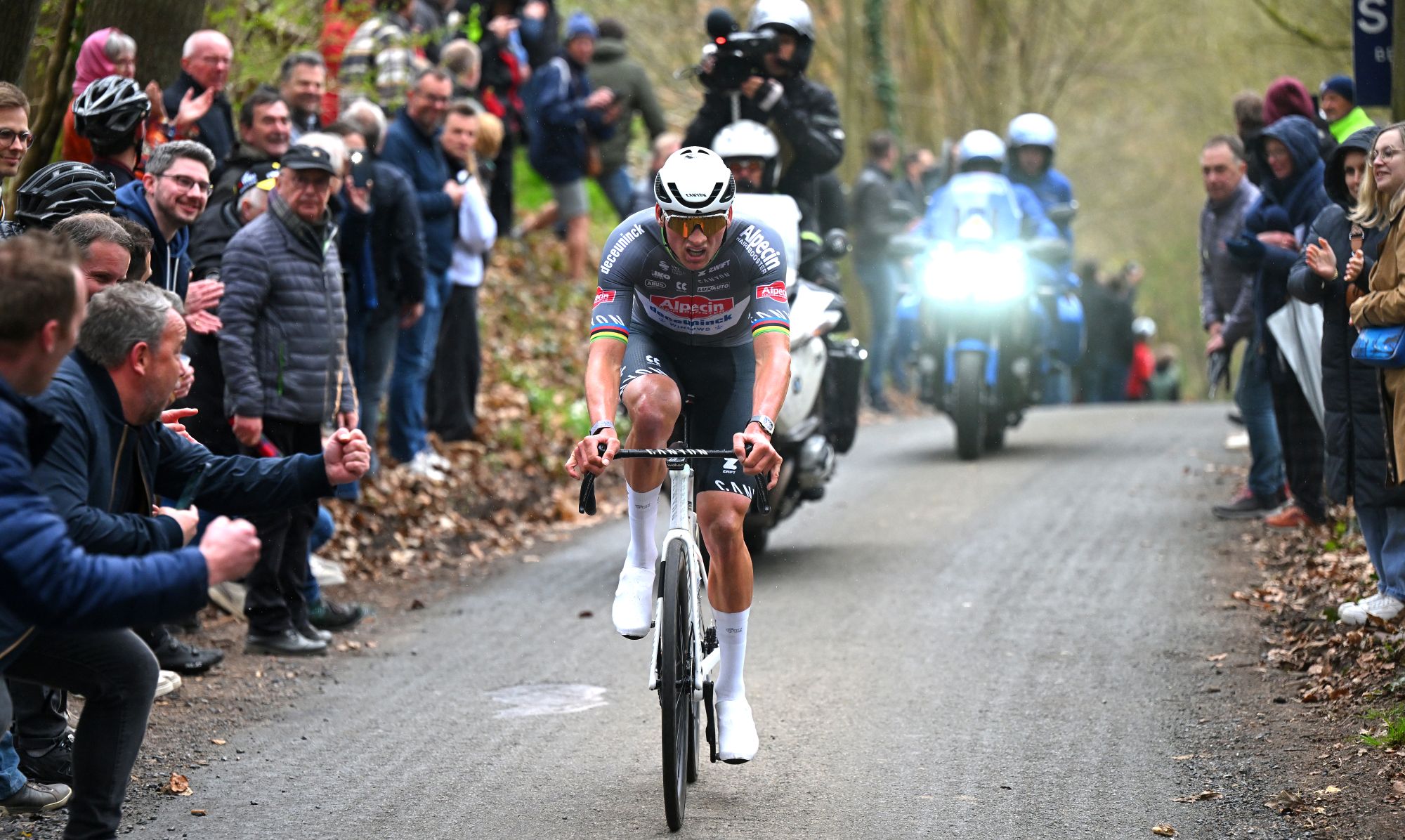 'I start every race to win' - Mathieu van der Poel fired up ahead of Paris-Roubaix showdown with Tadej Pogačar
'I start every race to win' - Mathieu van der Poel fired up ahead of Paris-Roubaix showdown with Tadej PogačarTwo-time winner says he has suffered with illness during spring Classics campaign
By Tom Thewlis Published
-
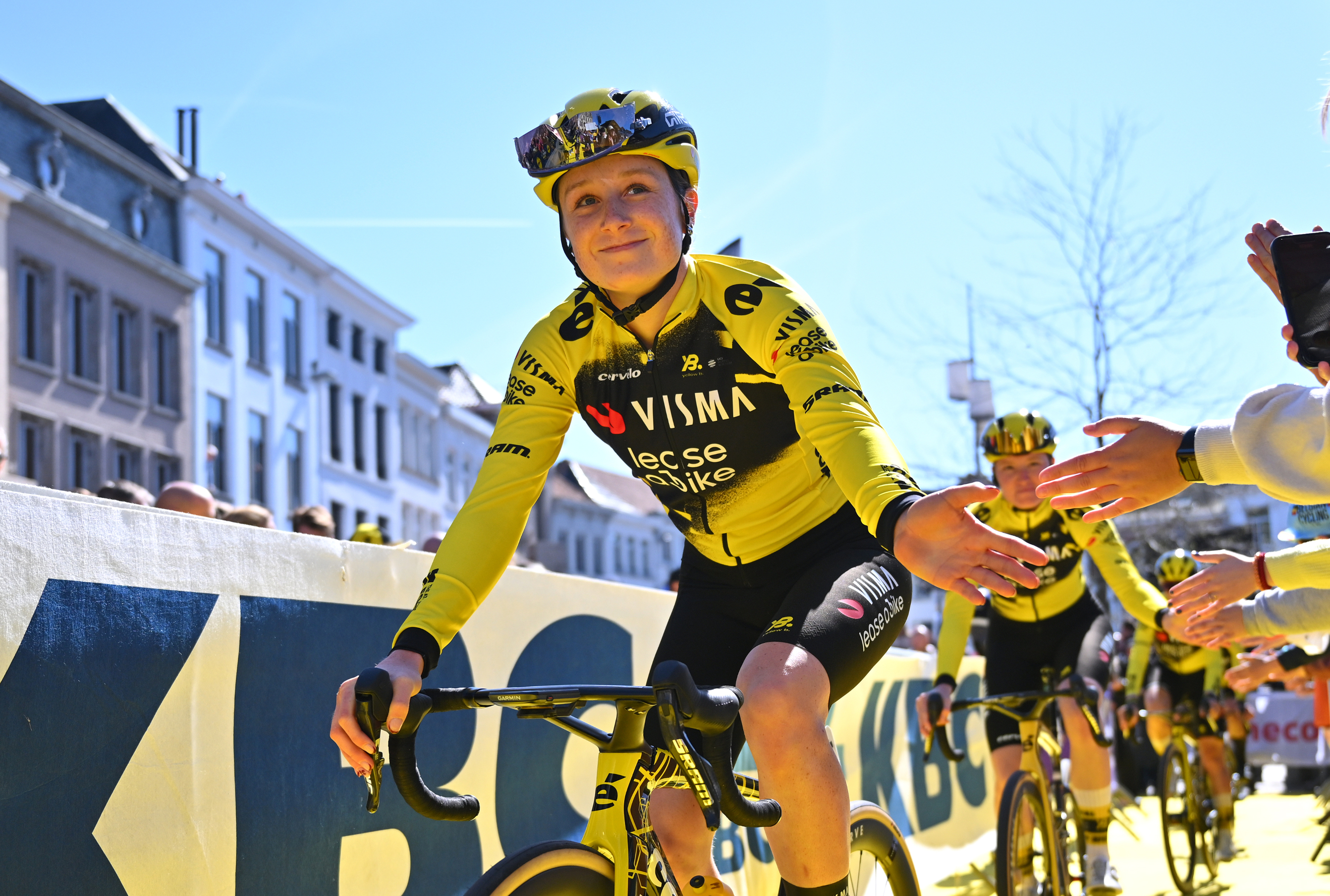 'It's really surreal that now I'm part of it' - 19-year-old Imogen Wolff set to go from spectator to racer at Paris-Roubaix
'It's really surreal that now I'm part of it' - 19-year-old Imogen Wolff set to go from spectator to racer at Paris-RoubaixBrit first came to see the 'Hell of the North' when she was six
By Tom Davidson Published
-
 I ran Paris-Roubaix’s Arenberg sector and now I never want to cycle it
I ran Paris-Roubaix’s Arenberg sector and now I never want to cycle itThe five-star stretch of the Hell of the North was not an ideal surface for a 4.5km run, but it made for an interesting time
By Adam Becket Published